Nose Surgery in Koh Samui
Search and Compare the Best Clinics and Doctors at the Lowest Prices for Nose Surgery in Koh Samui

Find the best clinics for Nose Surgery in Koh Samui
With Medijump you can browse 3 facilities offering Nose Surgery procedures in Koh Samui. The cheapest price available is $164 in Udon Thani
Nose Surgery in Thailand
Price: $ 164
Nose Surgery in Udon Thani
Price: $ 164
Nose Surgery in Nonthaburi
Price: $ 222
Poland offers the best prices Worldwide
Price: $ 101
From 1 verified reviews
Kasi Chewning, 29 November 2020
So expensive. Disappointed with my experience at this clinic. I felt like I was given the wrong advice and the result I got is not so great. 😩😩
NK Plastic Surgery Clinic, located in Laem Sor, Koh Samui, Thailand offers patients Nose Surgery procedures among its total of 18 available procedures, across 2 different specialties. Currently, there's no pricing information for Nose Surgery procedures at NK Plastic Surgery Clinic, as all prices are available on request only, whilst the national average price is approximately $6,394. All procedures and treatments are undertaken by the lead specialist at the Clinic, and they are accredited by Royal College of Surgeons of Thailand
Thitiwat Clinic -The leader Aesthetic Surgery & Skin Laser Center, located in Laem Sor, Koh Samui, Thailand offers patients Nose Surgery procedures among its total of 22 available procedures, across 3 different specialties. Currently, there's no pricing information for Nose Surgery procedures at Thitiwat Clinic -The leader Aesthetic Surgery & Skin Laser Center, as all prices are available on request only, whilst the national average price is approximately $6,394. There is currently a lack of information available on the specialists practicing at the Clinic, and they are accredited by ASPS - American Society of Plastic Surgeons
Compare Before & After Photos of _procedure_photos.phpNose Surgery
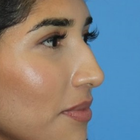
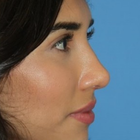
Full-side view
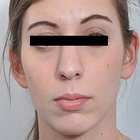

Front view
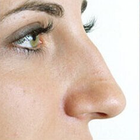
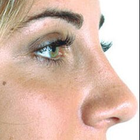
Full-side view
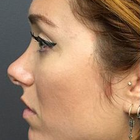
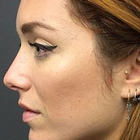
Full-side view
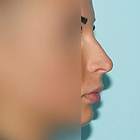
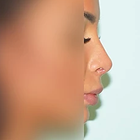
Full-side view

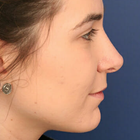
Full-side view
WHY US?
At Medijump, we're making medical easy. You can search, compare, discuss, and book your medical all in one place. We open the door to the best medical providers worldwide, saving you time and energy along the way, and it's all for FREE, no hidden fees, and no price markups guaranteed. So what are you waiting for?

Free

Best Price

Widest Selection

Risk-Free
What you need to know about Nose Surgery in Koh Samui
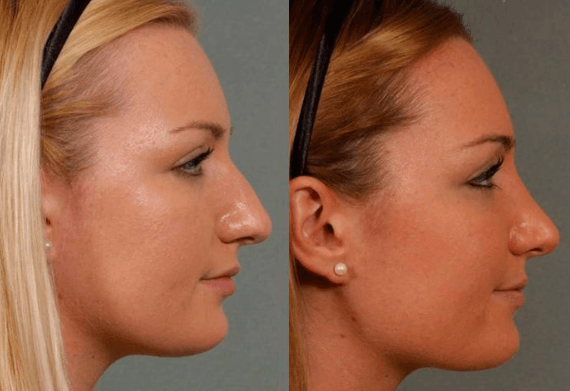
Commonly referred to as a Rhinoplasty, it is the medical term for reshaping of the nose or corrective surgery of the nose. It is one of the most common facial plastic surgeries (Facelift) procedures performed. Nose surgery can be performed to change the consequence of genetics, birth defect or nasal injury. It can be performed to enhance the appearance and/or to improve nasal breathing.
Surgery can be performed to correct nasal humps, the curvature of nose-bridge, nose tip irregularities, and asymmetry in the nostrils. The nasal appearance can be altered in various ways using intra-nasal chisels. Nose surgery procedures generally fall under three types: open rhinoplasty, closed rhinoplasty, and tip rhinoplasty. Rhinoplasty is normally performed under general anesthesia and will not leave any visible scars on the nose.
What does a Nose Surgery Procedure Involve?
Nose surgery is an individualized surgery. Before the surgery, you will need to discuss important factors with your surgeon to determine if it is suitable for you. Your surgeon will review your medical history, including your previous surgeries, medical conditions, and any medications you are taking. You will need to have a complete physical examination, such as blood tests. Your surgeon will also consider your other facial features, the skin on your nose, and what you would like to change or correct. Then, your surgeon will develop a customized plan for you. Two weeks before and after surgery, avoid any medications that contain aspirin or ibuprofen, such as Advil and Motrin IB because these medications can increase bleeding. You will need to also stop taking herbal remedies and over-the-counter supplements. If you are an active smoker, stop smoking because smoking can slow your healing process and increase the risk of getting an infection.
During the actual surgery, you will be given either local anesthesia or general anesthesia. The type of anesthesia depends on how complex the surgery is and what the surgeon would prefer to use. Then, the surgery will start by making incisions inside your nose or at the base of your nose between your nostrils. Your surgeon will reshape the inner bone and cartilage underneath your skin to make a more pleasing appearance.
There are several ways to change the shape of your nasal bones or cartilage, depending on your nose’s structure and how much needs to be removed or added. If only small changes are required, your surgeon may use cartilage taken from deeper inside your nose or your ear. However, for a much larger change, your surgeon may use cartilage from your rib, implants, or bone from other parts of your body. When the changes are finished, your surgeon will place the nose’s skin and tissue back. The incisions will be closed by stitches.
How Long Should I Stay in Koh Samui for a Nose Surgery Procedure?
If everything goes well, you can go back to your hotel on the same day once the effects of anesthesia wear off. However, you will need to stay in a recovery room for a few hours so the staff can monitor you. Some people may need to stay in hospital overnight. After you are discharged from the hospital, you will need to stay in Koh Samui for at least 10 to 14 days for initial recovery, follow-up checkups, and for the stitches to be removed.
What's the Recovery Time for Nose Surgery Procedures in Koh Samui?
The recovery period for nose surgery can be different from person to person. In general, 2 to 3 weeks is needed until you can get back to your full normal routine and 3 to 6 weeks until you can do any strenuous activity. However, you should be able to go back to work within a week, except if your job requires strenuous physical activity. You will feel gradually better each day in the first week. You will experience swelling, which can take six months to subside. The only people who will notice the swelling is you and your surgeon. Your final nose shape will be apparent after it is completely healed.
What sort of Aftercare is Required for Nose Surgery Procedures in Koh Samui?
After the surgery, you may need to wear a nasal splint for the first week. The splint is used to protect and support your nose. Your nose may be congested due to swelling or from the nasal splint. You need to rest in bed with your head raised higher than your chest to reduce bleeding and swelling. For a few days after the surgery, you may also experience slight bleeding and drainage of mucus. Your surgeon may place a “drip pad” under your nose to absorb drainage.
Your surgeon may ask you to avoid strenuous activity, take baths instead of showers, avoid blowing your nose, eat high-fiber foods to avoid constipation, not to do any facial expressions (smiling or laughing), not wearing pull clothing and wear button-downs instead.
For at least several weeks after the surgery, do not rest eyeglasses or sunglasses on your nose to prevent pressure. You should also wear SPF 30 sunscreen when you are outside because too much sun can cause permanent irregular discoloration to your nose. Do not put anything such as ice or cold packs on your nose even though it is swelling as the swelling will go away faster by limiting your dietary sodium.
What's the Success Rate of Nose Surgery Procedures in Koh Samui?
Nose surgery is known to have around 80% to 90% success rate. Nevertheless, just like any other surgery, it still has possible risks and complications. These risks are bleeding, infection, numbness, permanent nerve damage, and an adverse reaction to the anesthesia. You should call your surgeon immediately if you suspect any of the symptoms. Other possible risks are difficulty breathing through your nose, uneven-looking nose, persisting pain, swelling, and discoloration, scarring, septal perforation, and the need for a second or third surgery.
For an in-depth analysis of the closed rhinoplasty procedure with before and after images, watch this short video.
Are there Alternatives to Nose Surgery Procedures in Koh Samui?
If you do not want to undergo surgery, or if it is not suitable for you, you can get filler injections, such as Botox, Juvaderm, and Restylane. They can change the shape of your nose and only require a short visit to the doctor. This method is not painful and needs no incisions or stitches.
Whilst the information presented here has been accurately sourced and verified by a medical professional for its accuracy, it is still advised to consult with your doctor before pursuing a medical treatment at one of the listed medical providers
No Time?
Tell us what you're looking for and we'll reachout to the top clinics all at once
Enquire Now

Popular Procedures in Koh Samui
Prices Start From $404

Prices Start From $111

Prices Start From $70

Prices Start From $220

Prices Start From $1,945

Prices Start From $192

Prices Start From $500

Recommended Medical Centers in Koh Samui for Nose Surgery

- Interpreter services
- Translation service
- Religious facilities
- Medical records transfer
- Medical travel insurance
- Health insurance coordination
- TV in the room
- Safe in the room
- Phone in the room
- Private rooms for patients available

- Interpreter services
- Translation service
- Religious facilities
- Medical records transfer
- Medical travel insurance
- Health insurance coordination
- TV in the room
- Safe in the room
- Phone in the room
- Private rooms for patients available

- Interpreter services
- Translation service
- Religious facilities
- Medical records transfer
- Medical travel insurance
- Health insurance coordination
- TV in the room
- Safe in the room
- Phone in the room
- Private rooms for patients available

- Interpreter services
- Translation service
- Religious facilities
- Medical records transfer
- Medical travel insurance
- Health insurance coordination
- TV in the room
- Safe in the room
- Phone in the room
- Private rooms for patients available

- Interpreter services
- Translation service
- Religious facilities
- Medical records transfer
- Medical travel insurance
- Health insurance coordination
- TV in the room
- Safe in the room
- Phone in the room
- Private rooms for patients available

- Interpreter services
- Translation service
- Religious facilities
- Medical records transfer
- Medical travel insurance
- Health insurance coordination
- TV in the room
- Safe in the room
- Phone in the room
- Private rooms for patients available

- Interpreter services
- Translation service
- Religious facilities
- Medical records transfer
- Medical travel insurance
- Health insurance coordination
- TV in the room
- Safe in the room
- Phone in the room
- Private rooms for patients available

- Interpreter services
- Translation service
- Religious facilities
- Medical records transfer
- Medical travel insurance
- Health insurance coordination
- TV in the room
- Safe in the room
- Phone in the room
- Private rooms for patients available

- Interpreter services
- Translation service
- Religious facilities
- Medical records transfer
- Medical travel insurance
- Health insurance coordination
- TV in the room
- Safe in the room
- Phone in the room
- Private rooms for patients available

- Interpreter services
- Translation service
- Religious facilities
- Medical records transfer
- Medical travel insurance
- Health insurance coordination
- TV in the room
- Safe in the room
- Phone in the room
- Private rooms for patients available
Nose Surgery in and around Koh Samui
About Koh Samui
Koh Samui is the second-largest island in the Gulf of Thailand. Referred to as Samui, it was once a “backpacker’s paradise”. It has a bounty of natural wonders as well as man-made attractions such as the mummified monks and the glorious Buddha temples.
The idyllic atmosphere of Koh Samui makes it a perfect destination for both physical and mental wellbeing. It has become a preferred destination for medical tourism in the last few years. Visitors love the location and combine their holidays with medical and spa treatments.
The island has several sophisticated and state-of-art international hospitals such as the Bangkok Hospital, Samui, Bandon International Hospital, Samui International Hospital, and Thai International Hospital, Samui. These hospitals offer affordable and timely medical services to tourists who mainly come to undergo Cosmetic surgeries, Dental Aesthetic procedures, and Sex Reassignment surgeries. Such procedures when carried out in Koh Samui cost 20% to 25% less than the cost of the same treatments in their home countries.
With an eye on the possible growth within the realm of medical tourism, these hospitals are actively broadening the array of medical services they offer. They now furnish other types of procedures including, but not limited to, cardiac surgery, orthopedic surgery, and ophthalmic surgery.
In addition to these extended services, they have a roster of highly competent doctors on hand. These medical professionals are clearly proficient in English, thereby effectively ensuring smooth and easy communication with patients arriving from different parts of the world.
Popular Areas in Koh Samui
Koh Samui is home to many amazing beaches, locations, temples, and markets and some of the major and popular attractions of the island are:
- Ang Thong Marine Park – Ang Thong Marine Park is a group of 42 tiny lush green islands with lofty limestone cliffs, crystal clear beaches, fertile mangroves, waterfalls, hidden coves, and lakes. It is one of the most popular tourist destinations in Koh Samui, and it is easy to see why. The scenery is simply breathtaking.
- Wat Phra Yai – Wat Phra Yai, also known as the Big Buddha Temple, is one of the most iconic landmarks in Koh Samui. The golden-colored, 12-meter tall Buddha statue is hard to miss, and it is a popular pilgrimage site for both locals and tourists.
- Wat Plai Laem – Wat Plai Laem is an active Buddhist temple that is known for its beautiful architecture and its 18-arm image of Guanyin, the Goddess of Mercy and Compassion. It is a popular place to visit for both religious and cultural reasons.
- Na Muang Waterfall – It represents a set of two magnificent waterfalls. These lie about 7.5 miles southeast to Nathon Bay in inland.
- Chaweng and Lamai Beach – Are the two most popular beaches on the island. Chaweng beach is on the east coast of Samui and is known for its nightlife. Lamai beach has a more laid-back atmosphere, but it still has a variety of accommodation, dining & shopping choices, luxurious spas, and tourist spots.
Koh Samui’s other attractions include Hin Ta and Hin Yai, Koh Phangan island, Fisherman’s Village Bophut, Mummy Monk at Wat Khunaram, and the Secret Buddha Garden. Full Moon Party is an all-night beach party held on the Koh Phangan island on full moon day.
Weather and Climate in Phuket
Nestled in a tropical climate, Koh Samui basks in hot and humid weather that extends throughout the year. The humidity level typically straddles between 70 and 85 percent, creating a warm atmosphere indicative of tropical locales. Meanwhile, the average temperature usually hovers around a cosy 28 degrees Celsius.
The island ushers in three distinctive seasons, specifically, hot, dry, and rainy, each of them bringing a unique texture to the overall climate.
- Hot Season is between March and September. The hottest period is March and April when the temperature is 30 degrees Celsius and above. From May to September, it’s like a mini monsoon season with bright sunny days and light showers in the evening.
- Dry Season runs from December to February. The weather is pleasant with light cool winds. The sea is balmy and tourists flock the region during this season.
- Rainy Season is between September and November and the island faces its maximum rainfall with unpredictable weather and rough seas.
Getting Around in Koh Samui
Koh Samui’s airport is a private airport built by Bangkok Airways. It is still the main operator of flights to Samui. Flights to and from Bangkok operate almost every hour. It operates domestic flights to Phuket, Pattaya, and Chiang Mai, and international flights to Singapore, Kuala Lumpur, and Hong Kong every day. Thai Airways to flies between Bangkok and Ko Samui.
Besides Bangkok and Thai Airways, Berjaya Air & Firefly of Malaysia and Silk Air of Singapore also fly to Samui Airport. Air Asia offers a special ‘Island Transfer’ which comprises a flight from Bangkok to Surat Thani or Nakhon Si Thammarat, road travel to the port, and a ferry ride to Koh Samui.
Combined bus and ferry service from Surat Thani rail station or Surat Thani Airport are other options to reach Samui.
Moving around Koh Samui is easy as it is a small island and there are many transport options within Samui. They are songthaews, motorbikes, taxis, and cars and there are no tuk-tuks or buses.
- Songthaews – They are mini pick-up trucks that can accommodate 8-10 adults. They circle the main ring road of Samui and travel through the popular beach towns. The drivers pick you up from anywhere on the road.
- Metered Taxis – You can find them everywhere in the town. Despite having a meter, the drivers don’t use them. You need to bargain and fix a fare before you start your journey.
- Rent a Car – There are major car rental chains to book a car and they have a good collection of vehicles, but can be pricey. Then there are local car operators which are cheaper but can be unreliable.
- Scooter-taxis –These are the cheapest and quickest mode of transport.
Tourist Visas in Koh Samui
Visa Exemption or Visa Waiver Entry – Under a bilateral agreement, Thailand exempts nationals from 55 countries including the UK, USA, and many European countries from obtaining a tourist visa. The only condition is that tourists must have a passport that is valid for at least six months. They can get an arrival stamp on their passports, and stay in the country for a period of 30 days. They need not pay any visa fees, as it is not a visa on arrival rather just an entry stamp.
Visa on Arrival – Nationals from 24 countries like China and India with a valid Passport not expiring before six months, can get a visa on arrival at the airport. The visa permits them a stay of 15 days. There are designated immigration counters at the airport for issuing the visa.
Here are some additional tips for tourists applying for a visa on arrival in Thailand:
- Make sure that you have all of the required documents, including a valid passport, a return flight ticket, and proof of funds.
- Be prepared to pay the visa fee, which is 2,000 Thai baht.
- Be prepared to answer questions about your trip and your purpose for visiting Thailand.
Additional Information
- The main currency of exchange is the Thai Baht. One US dollar is worth about 34.5559 Thai Baht as of 2023. You can also use debit and credit cards.
- Most of the major banks operate in Samui Island. They exchange all major currencies and traveller’s cheques.
- You can find ATMs everywhere in Koh Samui. They accept both local as well as international debit cards. However, they charge you a small transactional fee when you withdraw from your country’s bank account.
- The locals of Koh Samui speak Thai – the official language of Thailand. People also understand and speak English to a certain extent, since the island is a famous tourist destination.
- Buddhism and reverence to the monarchy are striking aspects of Samui culture. It has a large Buddhist Thai population along with a traditional Muslim fishermen community.
- Important public holidays include:
- The Chinese New Year in February
- The Thai New Year (Songkran) in April
- The Festival of Lights (Loi Krathong) in November
- Christmas and New Year
Popular Searches
- Plastic Surgery in Thailand
- Dental Implants in Thailand
- Hair Transplant in Thailand
- Breast Augmentation Thailand
- Gastric Sleeve in Thailand
- Gender Reassignment Surgery in Thailand
- Laser Hair Removal in Bangkok
- Botox in Bangkok
- Dermatology in Bangkok
- Breast Augmentation in Bangkok
- Coolsculpting in Bangkok
- Veneers in Turkey
- Hair Transplant in Turkey
- Rhinoplasty in Turkey
- Stem Cell Therapy in Mexico
- Rhinoplasty in Mexico
- Liposuction in Mexico
- Coolsculpting in Tijuana
- Rhinoplasty in Korea
- Scar Removal in Korea
- Gastric Sleeve in Turkey
- Bone Marrow Transplant in India
- Invisalign in Malaysia
- Plastic Surgery in the Dominican Republic
- Tummy Tuck in the Dominican Republic
- Plastic and Cosmetic Surgery in Poland
- Rhinoplasty in Poland
- Hair Implant in Poland
- Dental Implants in Poland
- IVF in Turkey


